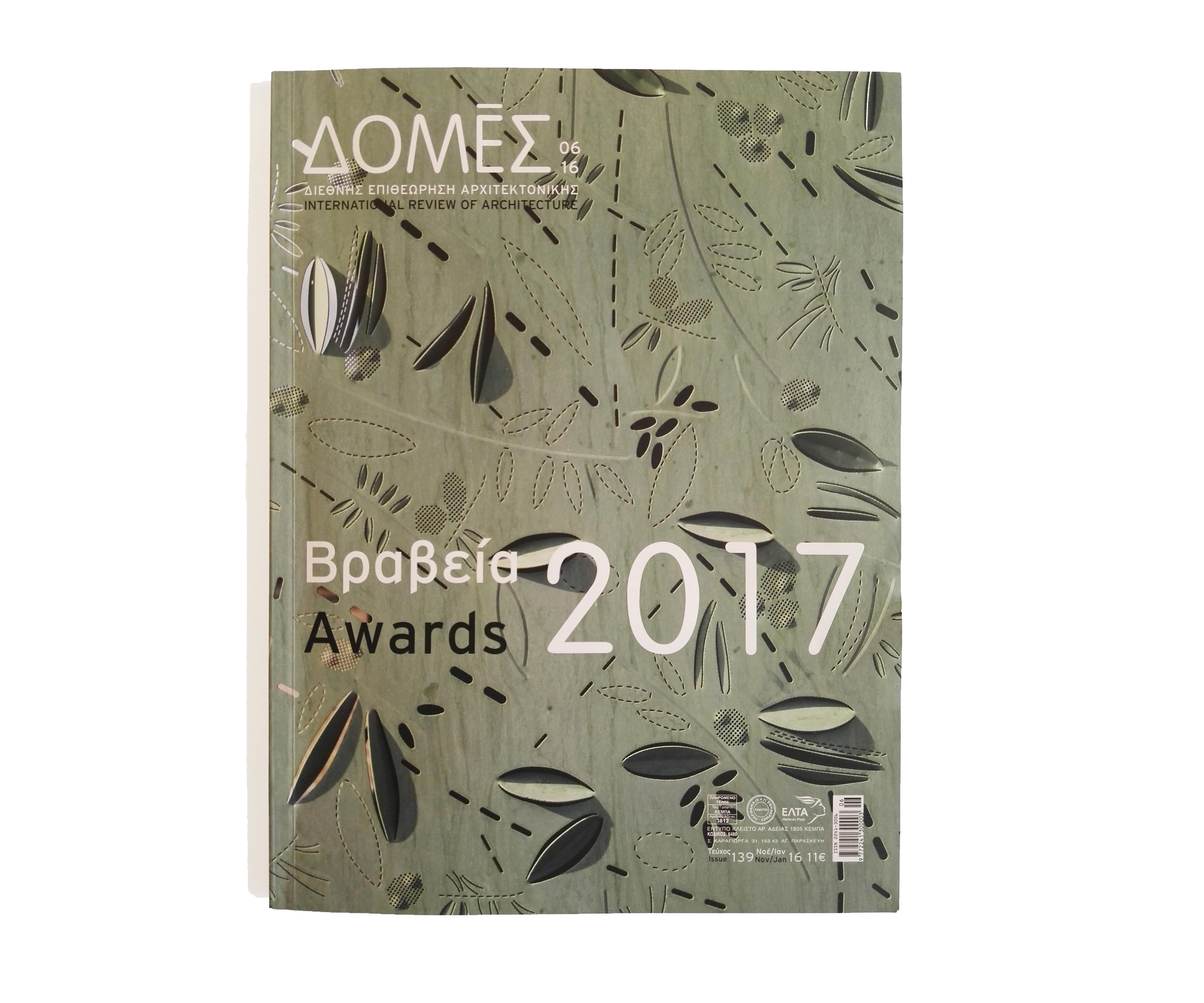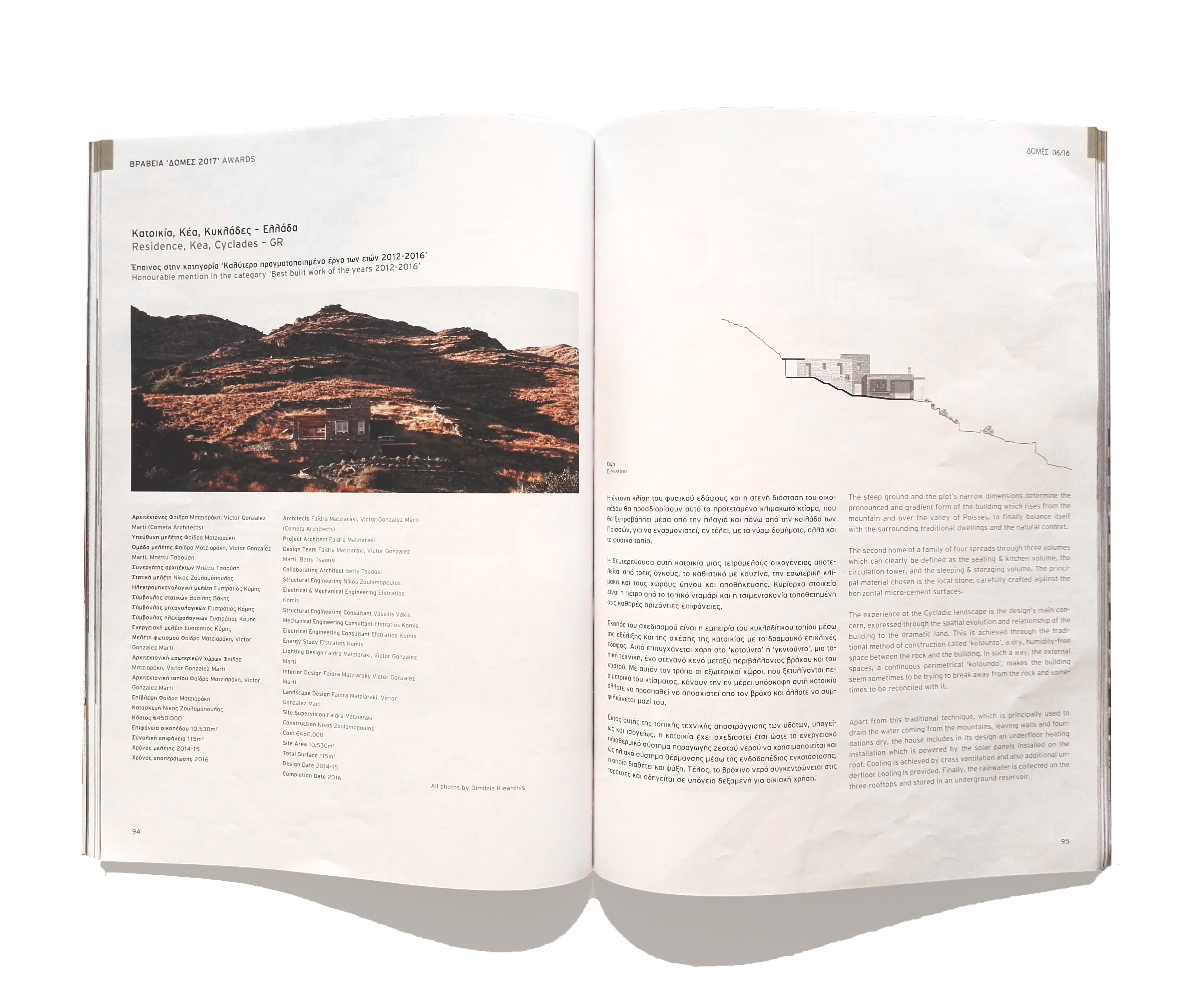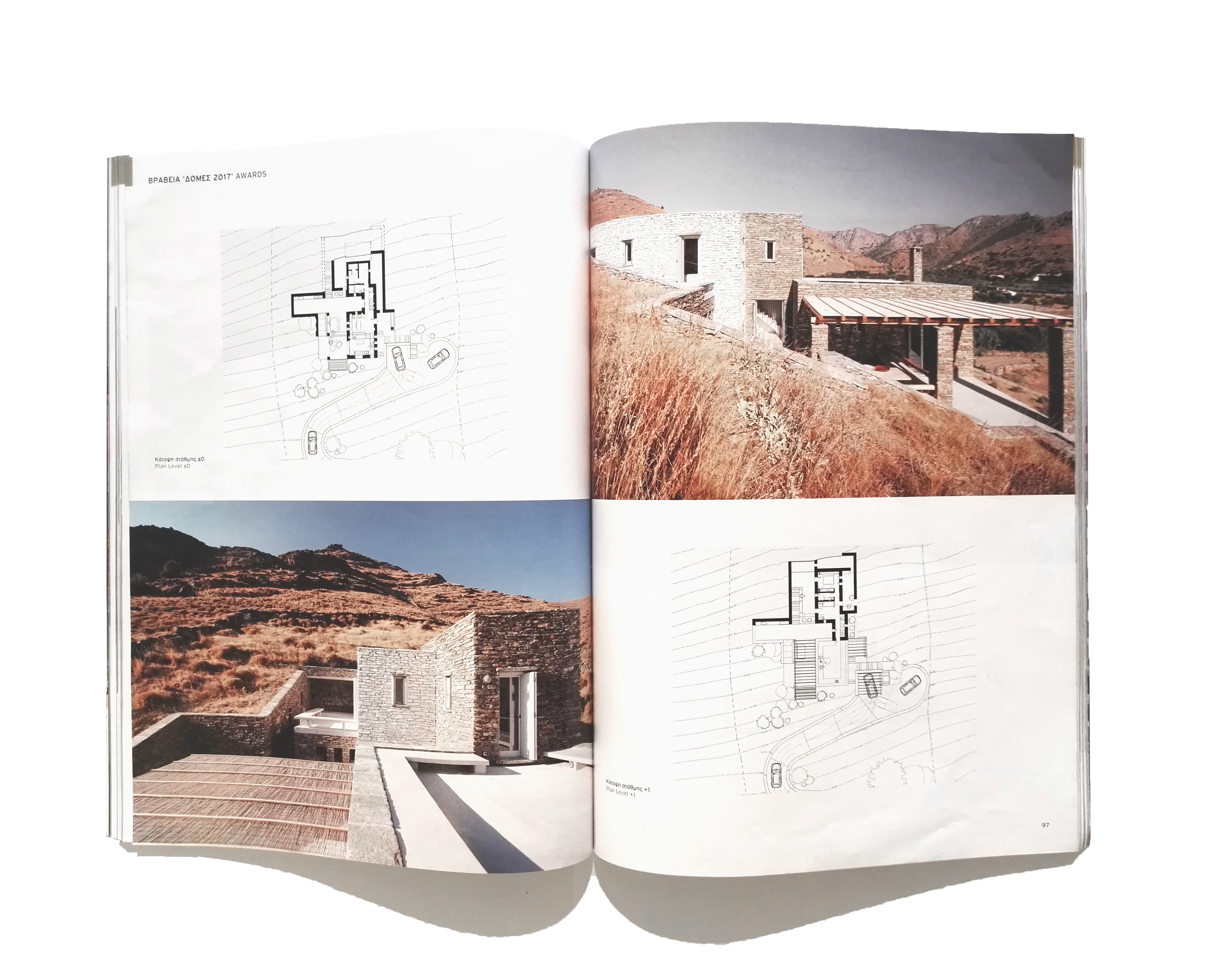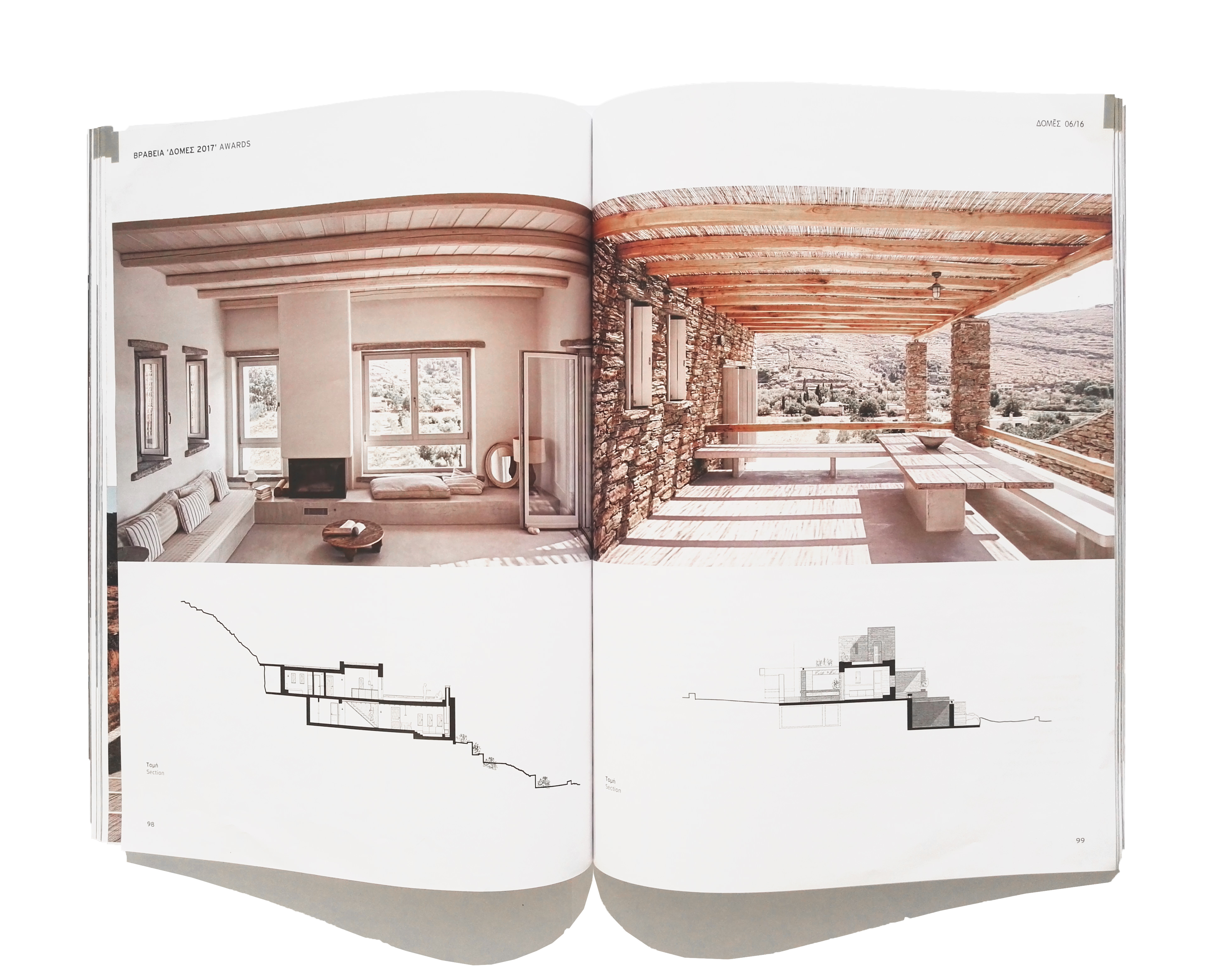Rocksplit House @ Domes Magazine




ABOUT DOMES, Greece
’ΔΟΜΕΣ‘ (Domes) and its contents are a function of the current situation of architecture, the circumstances under which it is practiced, and the editors’ perception.
It seeks to constitute a platform of international discourse, of colloquy and dialogue ideally, whilst based in Athens. There are prospects, and also restrictions posed by all that is local, just as there are inevitable ’glocal’ considerations -an interplay between global and local, general and particular, that is, after all, a hallmark of architecture.
The awareness of this condition leads to a preference for that which is concrete. This in turn arises out of locally and temporally determined conditions that generate the variety of architecture, without which international interchange would be totally insipid and international discourse utterly impossible.
The concepts of theme and archive assume special importance in this context. ’ΔΟΜΕΣ’ (Domes) would not be an instrument merely registering events and data, or assume an approach involving the serendipitous choice of thematically disparate material. The periodical systematically articulates its contents on the basis of specific themes, so that the multiplicity of correlations emerging thereby, may drive, enhance and sustain the impetus of its argument. Nonetheless, a focus on whatever is interesting presupposes the undertaking of retrospective assessments (albeit unavoidably subjective) along with an account and evaluation of the reasons that made certain criteria operative in the choice of subject matter, or in its critical reception. That is the reason why ’ΔΟΜΕΣ’ (Domes) occasionally revisits the notion of archive, for the purpose either of obtaining information, or achieving self-knowledge.
At an uncertain time ’ΔΟΜΕΣ’ (Domes) will endeavour to contribute to the emergence of a new confidence in experimenting and perfecting.
Summary of the article in DOMES
Summer house on the island of Tzia, designed by Cometa Architects. The building follows a dialogue between contemporary architecture and the traditional Greek house typology; while the steep ground and the plot’s narrow dimensions determine the pronounced also gradient form of the building. The house rises from the mountain and over the valley of Poisses; and finally balance itself with the surrounding traditional dwellings and also the natural context. The secondary home of a family of four, spreads through 3 volumes. Consequently the seating and kitchen volume, the circulation tower and the sleeping and storing volume. But specially relevant is that the principal material chosen for the house is the local stone, carefully crafted against the horizontal micro-cement surfaces.
The experience of the Cycladic landscape is the design’s main concern. So the experience is expressed through the spatial evolution and relationship of the house with the dramatic land. This is achieved through the traditional method of construction called “kotounto”. As a result, a dry, humid-free space between the rock and the house. In such a way, the external spaces, a continuous perimetrical ‘kotoundo’ makes the building sometimes trying to break away from the rock and sometimes to reconcile with it. This traditional technique is principally used to drain the waters coming from the mountains, leaving walls and foundations dry.
The house also includes in its design an under-floor heating installation by solar devices installed in the roof. The house is cooling through cross ventilation; but in addition, an under-floor cooling system is also provided witin the same devices. Finally, the house collects rainwater by 3 rooftops and stores it in an underground reservoir.
GREEK TEXT
Η έντονη κλίση του φυσικού εδάφους και η στενή διάσταση του οικοπέδου θα προσδιορίσουν αυτό το προτεταμένο κλιμακωτό κτίσμα που θα ξεπροβάλει μέσα από την πλαγιά και πάνω από την κοιλάδα των Ποισσών, για να εναρμονιστεί εν τέλει με τα γύρω κτήρια αλλά και το φυσικό τοπίο.
Η δευτερεύουσα αυτή κατοικία μιας τετραμελούς οικογένειας αποτελείται από τρεις όγκους, το καθιστικό με κουζίνα, την εσωτερική κλίμακα και τους χώρους ύπνου & αποθήκευσης. Κυρίαρχα στοιχεία είναι η πέτρα από το τοπικό νταμάρι και η τσιμεντοκονία τοποθετημένη στις καθαρές οριζόντιες επιφάνειες.
Σκοπός του σχεδιασμού είναι η εμπειρία του κυκλαδίτικου τοπίου μέσω της εξέλιξης και της σχέσης της κατοικίας με το δραματικό επικλινές έδαφος. Αυτό επιτυγχάνεται χάρη στο «Κοτούντο» ή «Γκντούντο», μια τοπική τεχνική, ένα στεγανό κενό μεταξύ του περιβάλλοντος βράχου και του κτηρίου. Με αυτόν τον τρόπο οι εξωτερικοί χώροι που ξετυλίγονται περιμετρικά του κτίσματος, κάνουνε την εν μέρει υπόσκαφη κατοικία, άλλοτε να προσπαθεί να αποσχιστεί από τον βράχο και άλλοτε να τείνει να συμφιλιωθεί μαζί του.
Εκτός αυτής τοπικής τεχνικής αποστράγγισης των υδάτων, υπογείως και ισογείως, η κατοικία έχει σχεδιαστεί έτσι ώστε το ενεργειακό-ηλιοθερμικό σύστημα παραγωγής ζεστού νερού να χρησιμοποιείται και ως ηλιακό σύστημα θέρμανσης μέσω της ενδοδαπέδιας εγκατάστασης η οποία διαθέτει και ψύξη. Τέλος το βρόχινο νερό συγκεντρώνεται στις ταράτσες και οδηγείται σε μια υπόγεια δεξαμενή για οικιακή χρήση.
Domes Facebook publication about the issue: